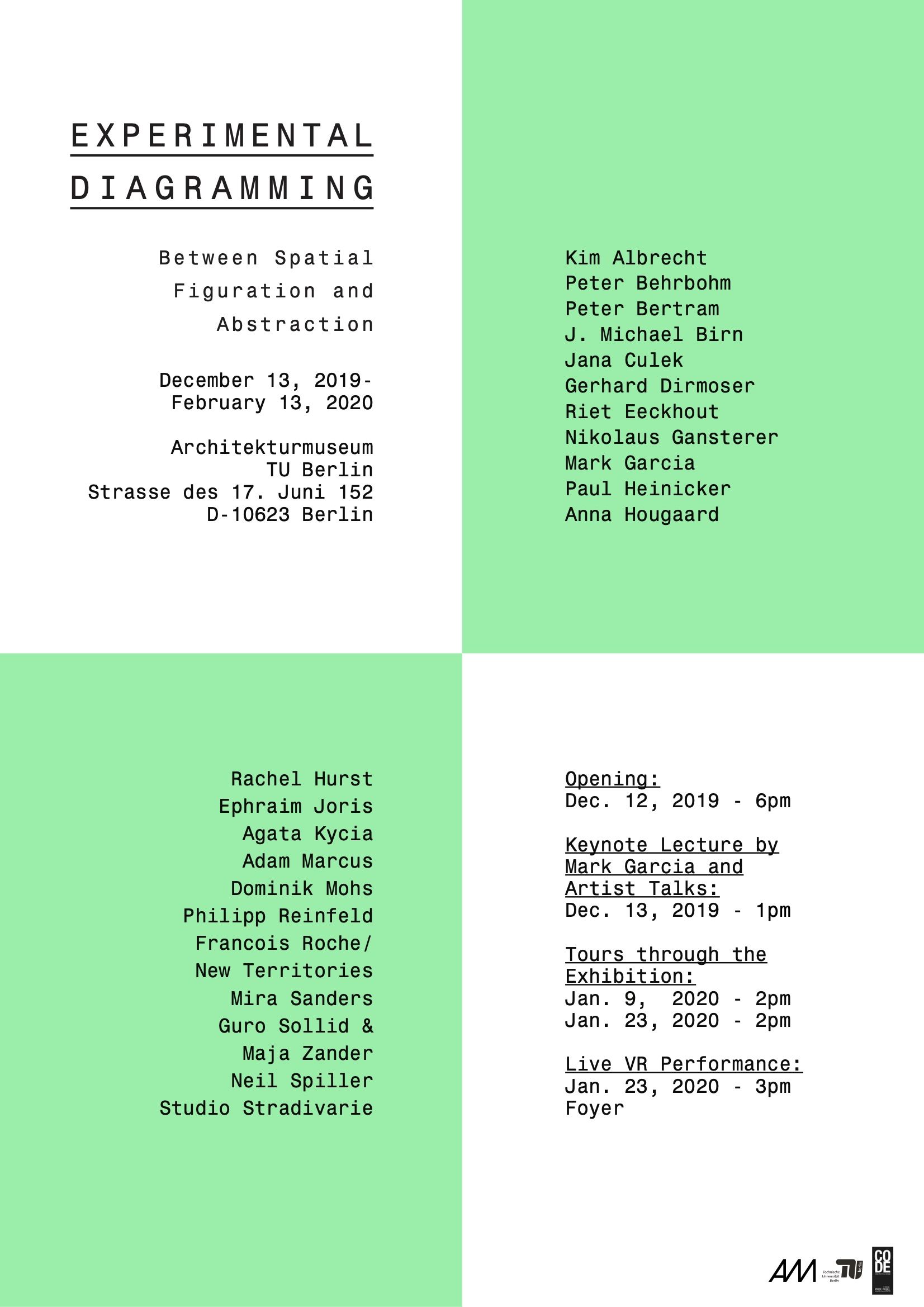
exhibition
12/12/2019
Architekturmuseum, TU Berlin
Experimental Diagramming
Over the past decades the diagram has developed into a constitutive, generative medium for architectural design. The diagram as a visual medium facilitates a generative translation of perceived configurations in the thinking process of architecture and vice versa. Yet, today this meaning of diagram has almost disappeared in the everyday use of this word. This exhibition presents an experimental use of diagrams that reveals their performative and transformative essence, rediscovering and presenting new experimental practices of diagramming architecture. Architectures are often implicit collections of diagrams – elements of the working tools of the design process. Diagrams thereby participate in the creation of architecture and its spatial organization. Such diagrammatic processes have become central in the transformation and generation of new architecture today, and the diagram is an essential translator between information and forms, data and design products, where numerical translation has spread and become institutionalized. Different meanings and definitions of the diagram exist within architectural design: from a significant preliminary sketch, to a schematic representation of a design concept, from a guiding principle shown indirectly through various guises within a variety of works to a generative code, which can spawn design families. Diagrams, moreover, are a widely used vessel for generating or communicating concepts; there are digital diagrams and analogue diagrams, conventional and experimental ones. Diagrams and mappings are an important medium for urban development by compressing, translating, and portraying complex relations of scale and material. Diagrams are closely related to the working media of architects. While the diagram is active in orchestrating thoughts and sensations, the diagram in architecture also relates to architecture’s working media. Diagrams can become generative in the process of creating, materializing, visualizing, and communicating architecture. Diagrams are thus important devices of mapping space and traces in architectural design and research. The exhibition shows experimental practices of diagramming that challenge conventional diagrams and develop new diagrammatic practices. The exhibition is based on a call for artefacts that reacts to the question of how we can understand the diagram today in architecture. It is a new way of grasping research as the relation between theoretical reflection, architectural artefacts, and museal exhibitions in the attempt to create a generative link between academic work, architectural production, and the spreading of knowledge. It is also a way of questioning new design practices and the sense of space they generate.The diagrams shown in the exhibition articulate architectural space between figuration and abstraction. The exhibition will be enriched by a program of lectures, talks, and performances.